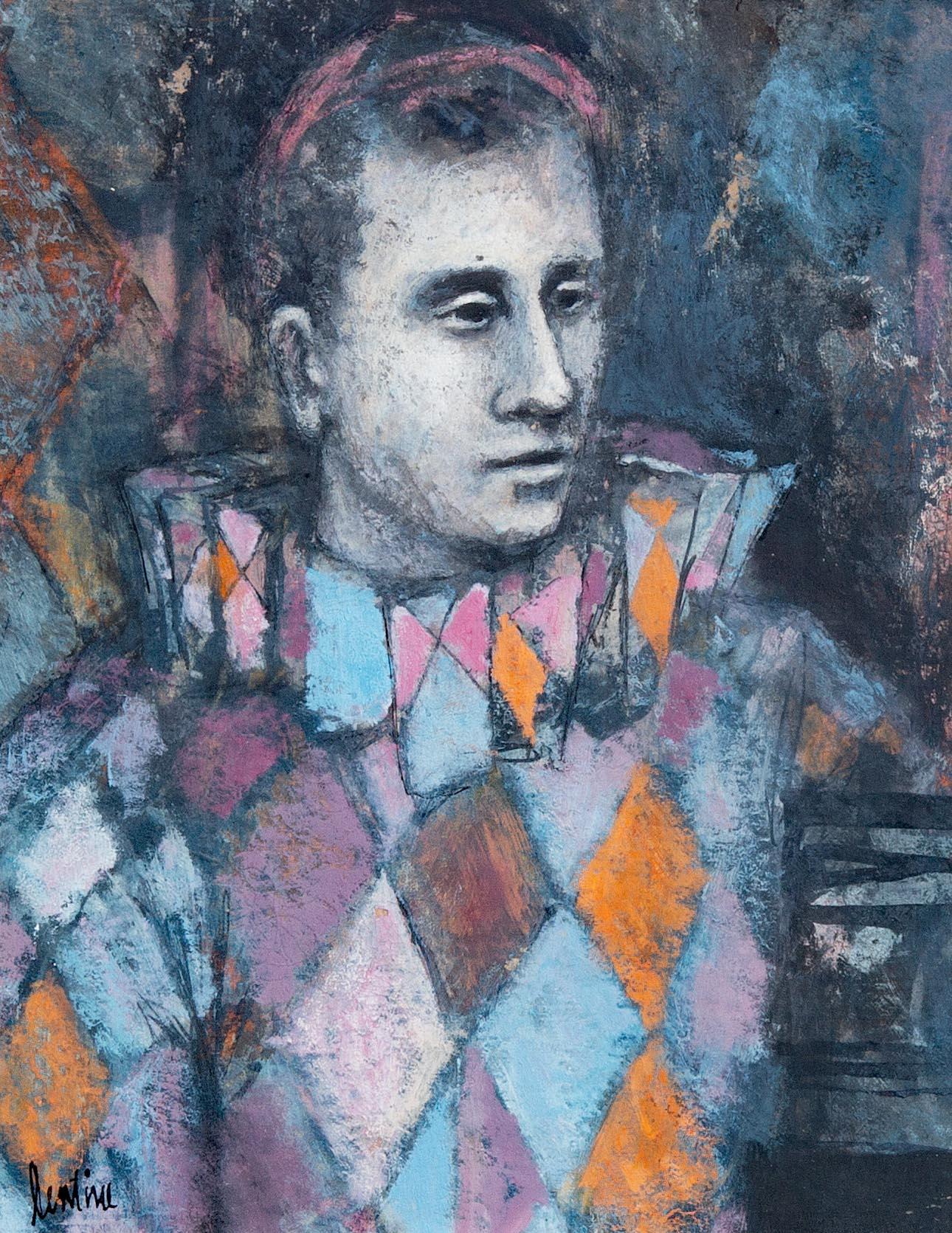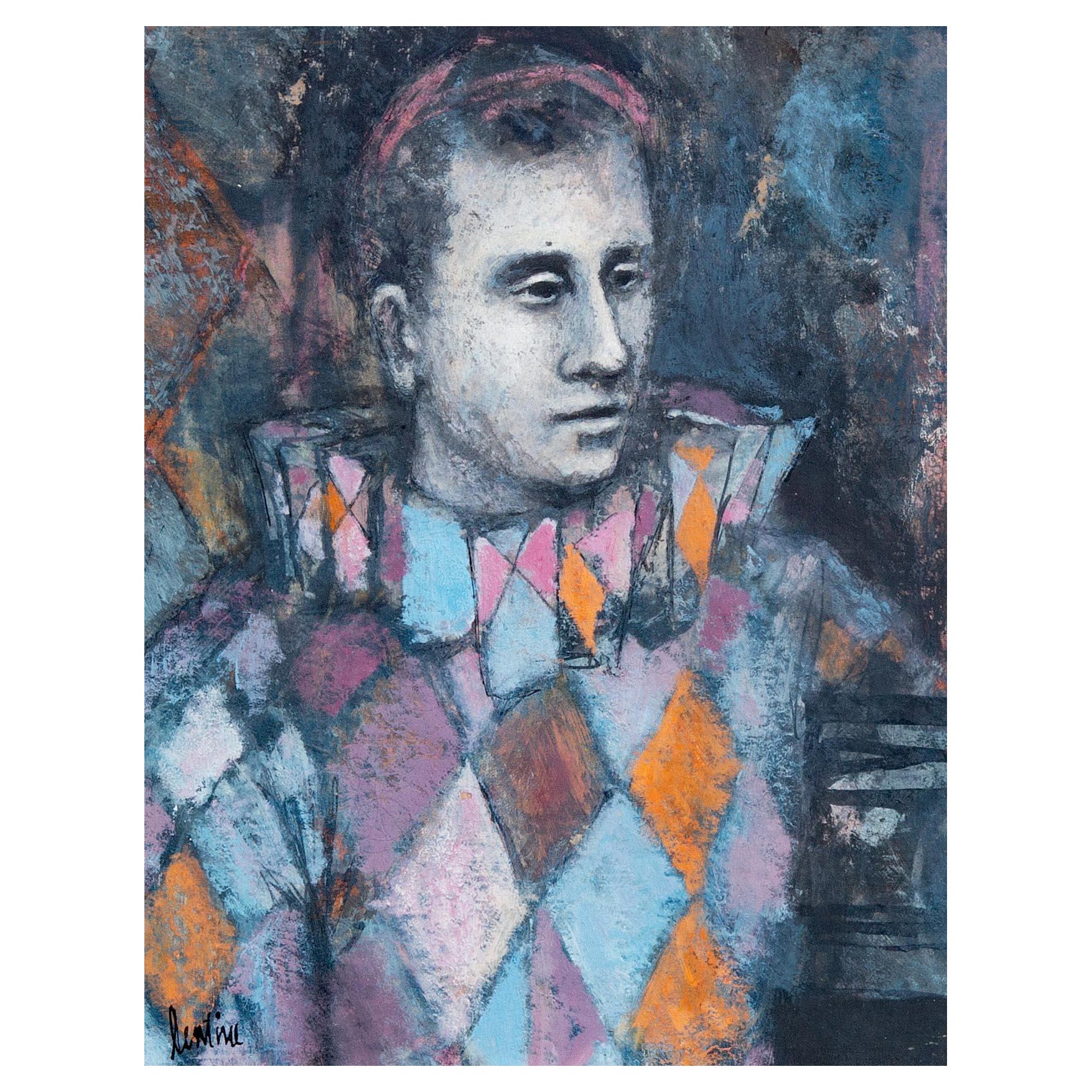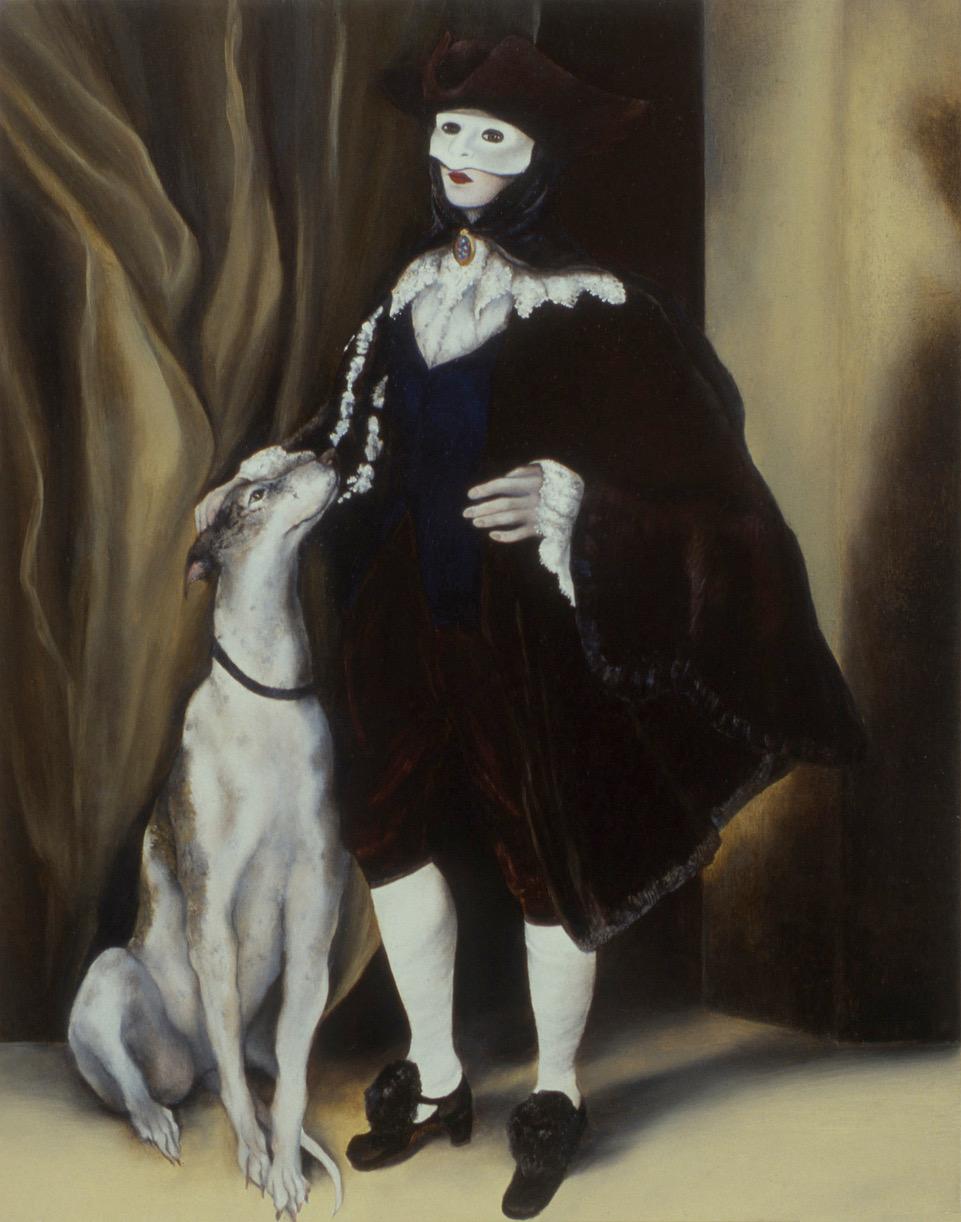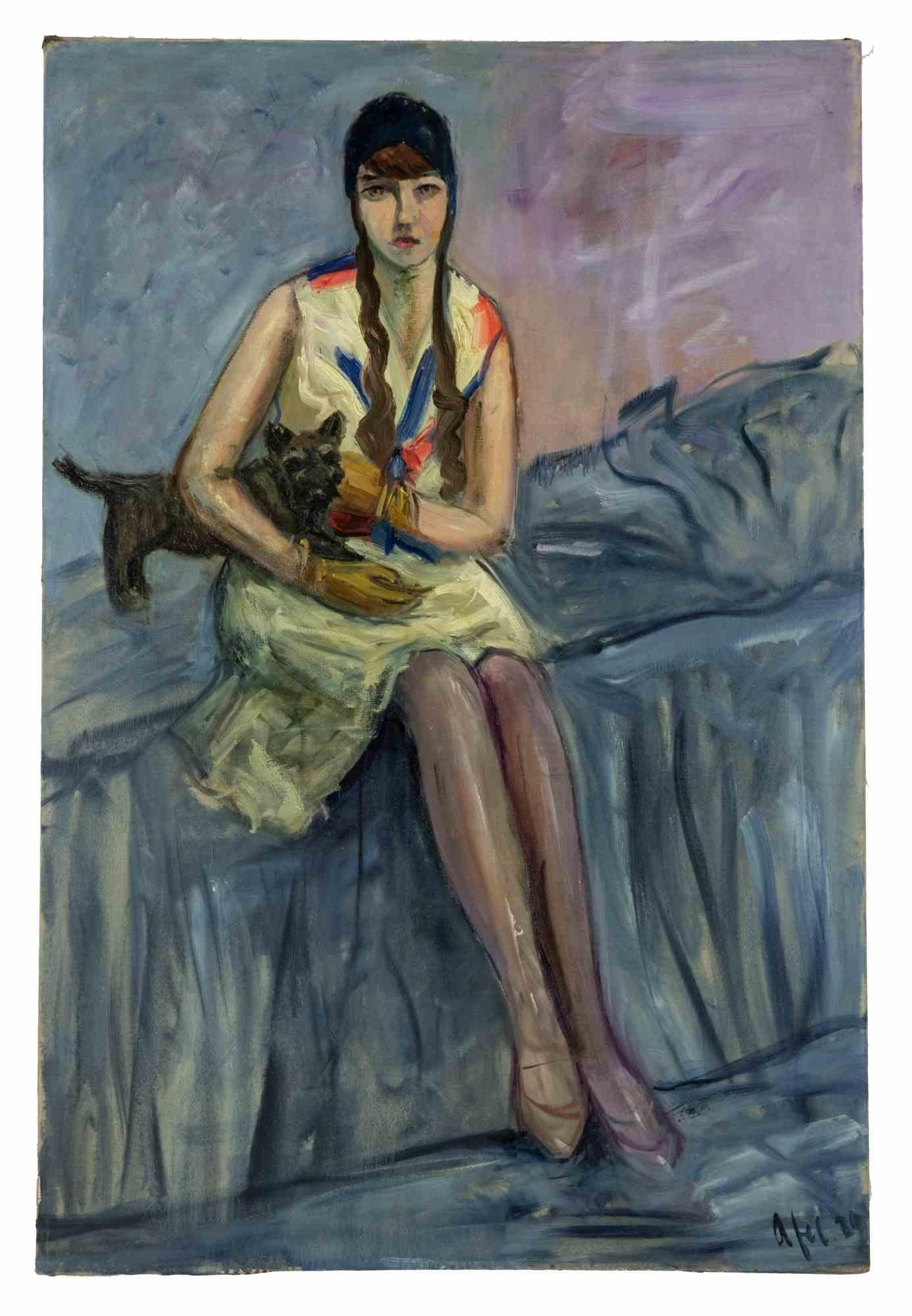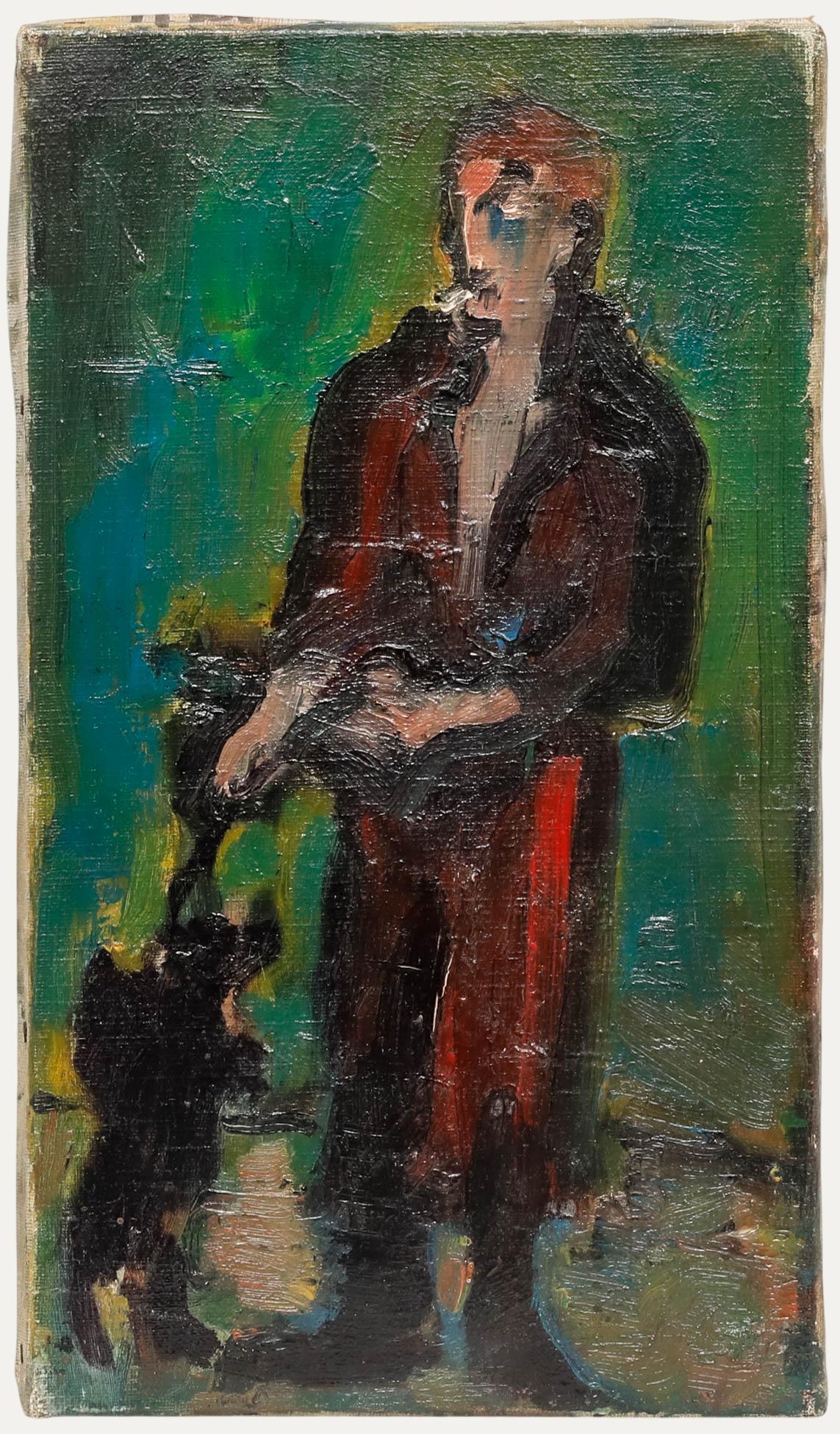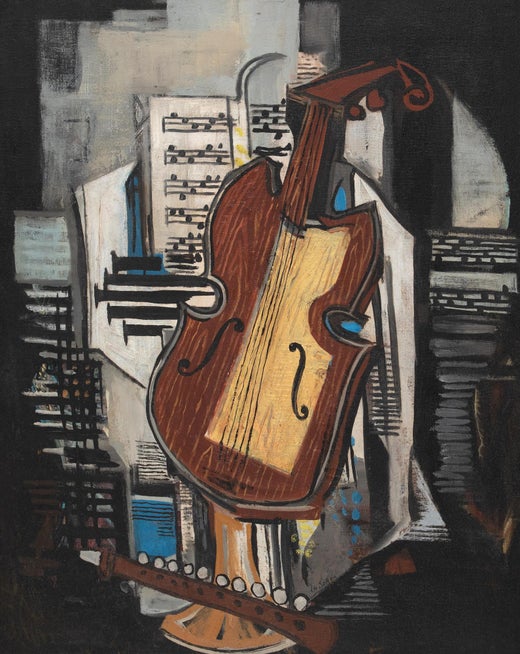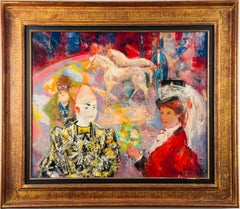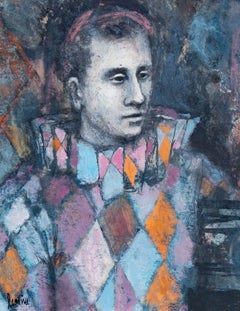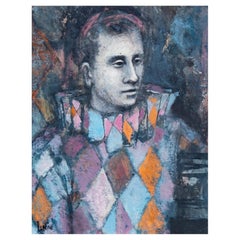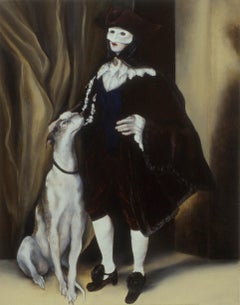Ismael de la Serna"Harlequin and his dog", 20th Century oil on cardbard by Ismael de la Serna1955
1955
About the Item
- Creator:Ismael de la Serna (1897 - 1968, Spanish)
- Creation Year:1955
- Dimensions:Height: 41.74 in (106 cm)Width: 27.56 in (70 cm)
- More Editions & Sizes:106 X 70 cm.Price: $69,189
- Medium:
- Movement & Style:
- Period:
- Condition:
- Gallery Location:Madrid, ES
- Reference Number:1stDibs: LU128114734891
Ismael de la Serna
Born in Spain, Ismael González "de la" Serna studied at the Academy of Fine Arts in Granada, Spain. While at school, González befriended the famous poet Federico Garcia Lorca, whose first book, Impresiones y Paisajes, was illustrated by González. This friendship proved to be crucial in navigating the direction of his work. After visiting the French Impressionists exhibition in Madrid in 1917, González became more focused on developing a “free” artistic style. This exhibition founded his notions of color and line and remained a consistent narrative throughout his oeuvre. In 1921, he moved to Paris, rarely returning to Spain. In Paris, he was a member of the avant-garde group Spanish School of Paris. During this period, he was influenced by the Cubist artists George Braque and fellow Spaniard Pablo Picasso. It is claimed by the art critic Tériade that Picasso declared, “At last, a true painter! As grand as Juan Gris!”
González exhibited widely in the 1920s with much success. Paul Guillaume — a renowned Parisian art dealer of the Modigliani, Pablo Picasso and Henri Matisse — organized for an exhibition of 50 of his works. This led to him exhibiting in the Musée du Jeu de Paume, Paris in 1936; the Spanish Pavilion at the Paris International Exhibition in 1937; and later, an individual exhibition at the Galerie Flechtheim in Berlin, which was sold out.
In González’s later years, there was a retrospective at the Museum of Fine Arts in Mexico in 1956, which was soon followed by another retrospective at the Tate Gallery in London in 1963. In 1964, he became wheelchair-bound after a long battle with cerebral palsy. From this point on, González very rarely ventured out of his home. After his death, the Museum of Modern Art in Paris held a retrospective exhibition in homage to this great artist. Initially, González experimented with neoclassic forms, later moving to a more Cubist style. Although a Cubist painter, González’s paintings were unique, as they revealed an affection for color influenced by the French Impressionists such as Cézanne and Camille Pissarro. In the 1950s, he drifted away from commercial conventions to search for “the essence and the ultimate goal of painting.” He reduced an image to its bare essence, a mere outline in which form approached the postulate of Abstraction.
(Biography provided by Stern Pissarro Gallery)
- ShippingRetrieving quote...Shipping from: Madrid, Spain
- Return Policy
More From This Seller
View All1950s Fauvist Portrait Paintings
Gouache, Cardboard
Early 1900s Realist Figurative Paintings
Oil, Wood Panel
1970s Post-Impressionist Figurative Paintings
Canvas, Oil
1960s Post-Impressionist Figurative Paintings
Canvas, Oil
1970s Post-Impressionist Figurative Paintings
Canvas, Oil
1980s Romantic Figurative Paintings
Canvas, Oil
You May Also Like
Mid-20th Century Impressionist Portrait Paintings
Paper, Oil
Mid-20th Century American Paintings
Paint
1970s Impressionist Figurative Paintings
Oil, Board
1990s Contemporary Still-life Paintings
Oil, Panel, Wood Panel
1930s Modern Figurative Paintings
Paint
20th Century Portrait Paintings
Oil
